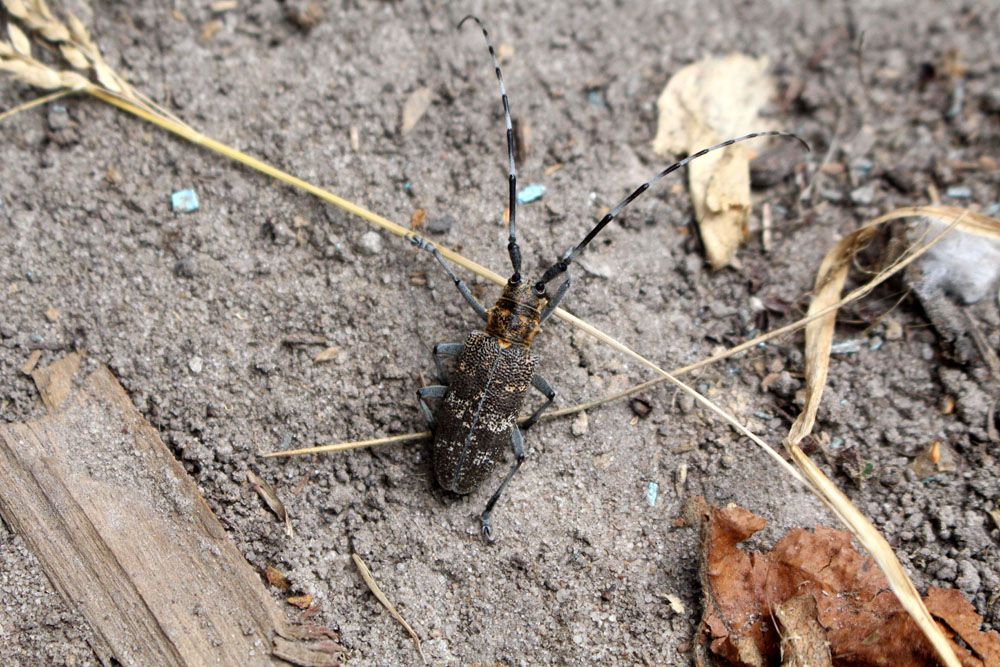
Spotted Pine Sawyer – Monochamus clamator
Spotted Pine Sawyer (Monochamus clamator)
Latin Name: Monochamus clamator
Common Name: Spotted Pine Sawyer
Appearance:
- Adult pine sawyers are big beetles that range in color from black to brownish-gray with white markings. The overall color ranges from dark gray to black, with a large white patch in the center of the body towards the base of the wing coverings.
- Some may be mostly gray, while others may be brown with vague patterned light patterns all over the body.
- Adult pine sawyers have extraordinarily long antennae that can stretch one to three times the length of the body. Females tend to have a bigger body and shorter front legs than males.
- The larvae are long, segmented, legless grubs with brownish heads that grow 20-25 mm long when fully developed.
